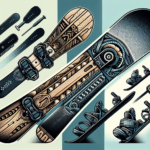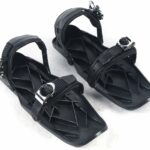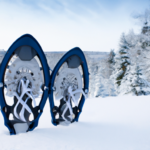Are you an outdoor enthusiast or a winter sports buff who adores snowshoeing? If so, you might be intrigued to learn how the apparatus you stride upon has evolved over the last decade or so. This article “Have Snowshoes Changed In The Past Ten Or Fifteen Years?” offers an insightful perspective into how these essential winter tools have transformed in terms of technology, material and design, effectively altering the snowshoeing experience for the better. As you read on, you’ll find an engaging exploration of the fascinating journey that snowshoes have traversed over the past ten to fifteen years, and how this has influenced their application in our current times.
Brief History of Snowshoes
Snowshoes have a very rich history that spans centuries. To fully appreciate this useful tool, let’s float back in time and uncover the mystery behind the snowshoes.
Origin of snowshoes
The origin of snowshoes is not clearly defined, with timeframes spanning ages from as early as 4,000 BC and right through to the Middle Ages. Regardless, it’s widely accepted that snowshoes were invented by indigenous peoples in colder regions of the world who needed effective means of traversing their icy landscapes. You can imagine the inventiveness of the ancient people who first crafted snowshoes out of available materials just so they could travel along snow-covered terrains in search of food.
Historical use of snowshoes
Historically, snowshoes were essential for survival in the snowy and icy regions. They were integral in hunting, trading, and even warfare. Interestingly, the design of the snowshoes allowed for silent movement in the snow, which helped hunters stalk their prey without being detected. This unrivaled advantage led to a deep-rooted culture with snowshoes being highly revered and often linked to traditional ceremonies.
Evolution through the years
Over the years, and as new materials and technologies came to the forefront, the design, effectiveness, and efficiency of snowshoes improved significantly. Ongoing evolution resulted in snowshoes becoming lighter, stronger, and more durable.
Components of Traditional Snowshoes
Materials used
You might be struck with awe to know that the first snowshoes were made from hardened wood and animal skins, specifically designed to spread the wearer’s weight over a larger area to prevent sinking into snow. Rawhide lacing was also often used to give structure to the shoes.
Design and pattern
The fantastic part is, the original snowshoe design varied by region, with each design catering to specific types of terrain and snow conditions. The most common shapes included the oval or circular Alaskan type, the narrower and pointed Canadian type, and the triangular or ‘bear paw’ style found in the northeastern United States.
Size and weight
The size and weight of traditional snowshoes were generally quite large and cumbersome, making them difficult to use in steep or rocky terrain. However, they were very effective in deep snow thanks to their large surface area, which provided excellent flotation.
Snowshoes in the Last Few Decades
Popularity in the 80s and 90s
Snowshoes saw a considerable surge in popularity in the 80s and 90s. They were no longer just a means for survival or tools for hunting; they became a popular recreational activity and even a competitive sport. The increased interest led to increased demand, fueling advancements in technology and design.
Changes in design and materials
The biggest change that happened in this era was the shift from traditional materials like wood and rawhide to more modern and durable materials like metal and synthetic fabric. These changes made snowshoes lighter, more durable, and easier to maneuver in different snow conditions.
Introduction of modern elements
Modern elements like heel lifts, crampons for improved traction, and adjustable bindings were introduced. These enhancements significantly impacted the efficiency, safety, and comfort of snowshoers.
Snowshoes in the Past 15 Years
Significant changes
In the past 15 years, snowshoes have undergone tremendous changes. Designs have become more specialized, and snowshoes are now made for particular activities like mountaineering, running, and even backcountry exploration.
Introduction of new technologies
The technological advancements in this period have been remarkable. From easy-to-use adjustable bindings to lightweight aluminum frames, and even unisex designs, the snowshoes of today stand testament to pioneering ingenuity and innovation.
Adaptations to varying snow conditions
Another noteworthy change is in the design adaptations to varying snow conditions, from wet and heavy snow to light fluffy snow. Technology now allows for better traction control and flotation, improving overall maneuverability and safety for various snowshoeing activities.
Influence of Material Innovations
Shift from traditional to modern materials
The shift from traditional to modern materials has revolutionized snowshoes. Modern materials such as plastic and aluminum are lighter, more durable, and resistant to weather changes, making them much more efficient than traditional materials.
Impact on weight and durability
The implication of this shift in materials has been an undeniable reduction in weight and increase in durability. The use of lighter materials has made snowshoeing much less cumbersome, more enjoyable, and accessible to a broader population.
Influence on traction and flotation
The integration of modern materials and designs has significantly improved the traction and flotation capability of snowshoes. This has made it possible for snowshoers to handle a wider range of snow conditions and terrains.
Changes in Design and Construction
New shapes of snowshoes
In recent years, we’ve seen new shapes of snowshoes introduced into the market. These new shapes, tailored to different snow conditions and activities, have added to the versatility and functionality of snowshoes.
Improvements in bindings
Bindings have become one of the most significant areas of innovation in snowshoe design. Today’s bindings are fully adjustable and secure, providing an excellent fit no matter what type of footwear you’re using.
Innovations in decking and crampons
Decking and crampons have also gone through a total revamp. They incorporate advancements that allow for better stability, grip, and control on slippery surfaces.
Enhancements in Performance and Comfort
Improvements in stability and maneuverability
With the ongoing changes in materials and design, stability and maneuverability of snowshoes have also rather improved. Regardless of your activity or snow conditions, the modern snowshoes ensure you can comfortably negotiate various terrains with greater ease than ever.
Influence on speed
Today’s snowshoes give you unprecedented control over your speed. Whether you prefer a leisurely pace or a racing tempo, there are snowshoes designed for your unique needs.
Addition of features for comfort
Cushioning, flexible bindings, improved weight distribution – these are just some of the comfort-enhancing features that modern snowshoes boast. This has significantly improved the comfort and enjoyment of snowshoeing.
Impact on Snowshoeing Activities
Effect on recreational snowshoeing
Improvements in snowshoe design and performance have made recreational snowshoeing more approachable and more enjoyable for novices and experts alike. People are now more encouraged to engage in this winter exercise and appreciate the beauty of nature.
Influence on competitive snowshoeing
Competitive snowshoeing has moved to another level over the years, directly as a result of advancements in snowshoeing technology. Athletes are now able to achieve faster speeds and navigate through complex terrains while maintaining perfect balance and control.
Changes in snowshoeing safety
Thanks to better traction, stability, and control, snowshoeing safety has tremendously improved. Users can now confidently explore snowy terrains with reduced risk of falls and mishaps.
Economic Aspects
Market trends
The snowshoeing industry has been growing rapidly over the past decade, driven by an increased interest in outdoor recreational activities, competitive sports, and fitness alike. This trend doesn’t appear to be slowing down anytime soon.
Influence on price
True, innovations have led to an overall increase in the price of snowshoes. But it’s also undeniable that the value these new features add is well worth the investment. More so, there are options available for all budgets, from basic models to high-end professional designs.
Snowshoe manufacturing industry
The snowshoe manufacturing industry has also evolved along with the product. Companies are now focusing more on innovation, sustainability, and user-centric design.
Future Trends and Predictions
Possible advancements in technology
In the foreseeable future, we can expect continued technological advancements that will further improve the performance and efficiency of snowshoes, possibly even incorporating smart technology and AI into their functionality.
Sustainability and environmental considerations
With the increasing focus on the environment and sustainability, companies will likely consider eco-friendly materials and manufacturing processes.
Future of snowshoeing lifestyle
As the popularity of outdoor activities continues to grow, the future of the snowshoeing lifestyle seems bright. We can expect an increased adoption of the activity by people of all ages, as well as greater promotion in the fitness and tourism sectors.
So there you go! The journey of snowshoes from their humble beginning to what they are today is undoubtedly impressive. The constant innovations have not only made them more useable but also added fun to the experience. Looking towards the future, it’s exciting to see where the next turn in the road will take our trusty snowshoes.
- What Snowboard Bindings Should I Get? - January 23, 2024
- What Size Screws For Snowboard Bindings? - January 23, 2024
- How To Snowmobile On Water? - January 23, 2024










